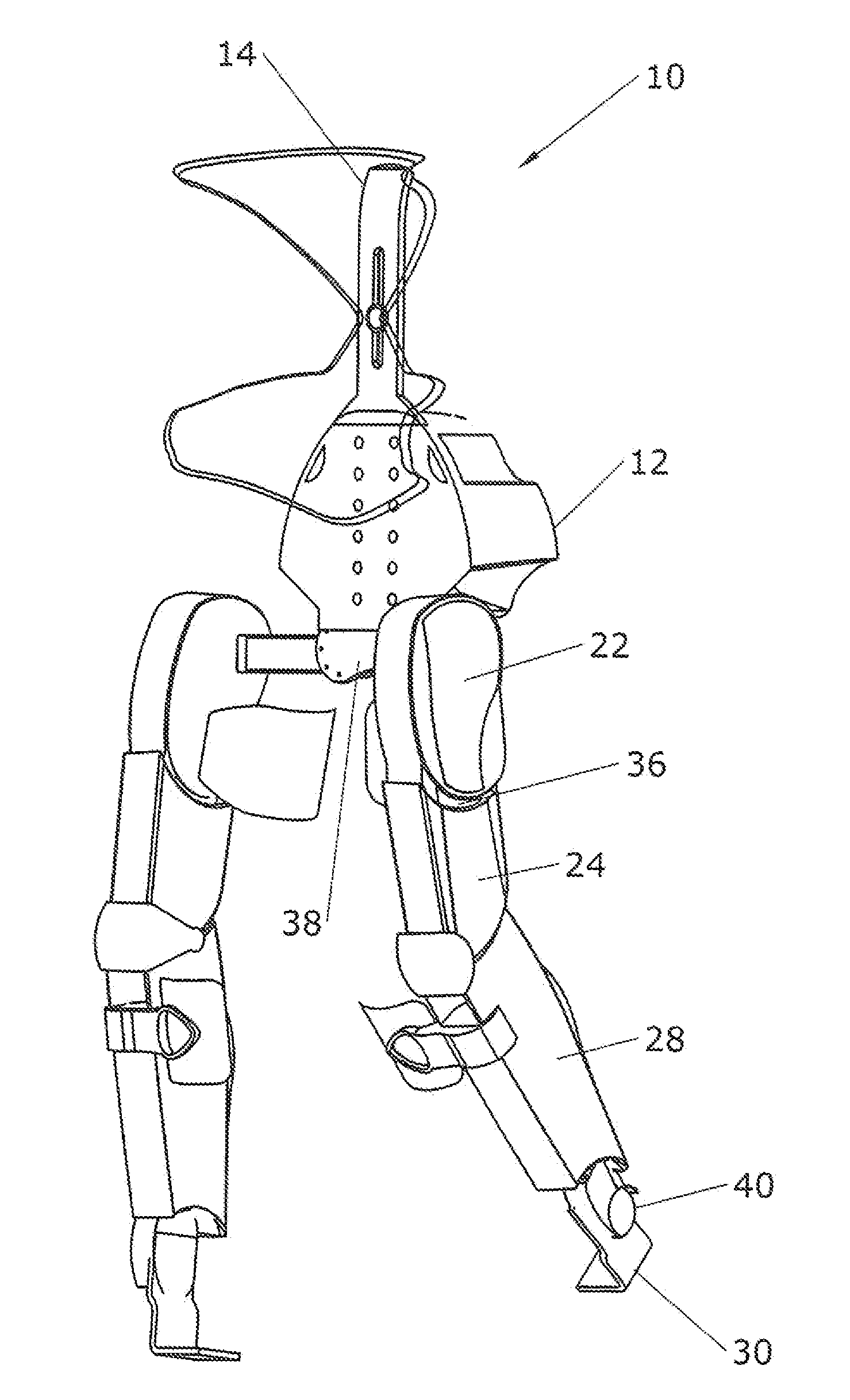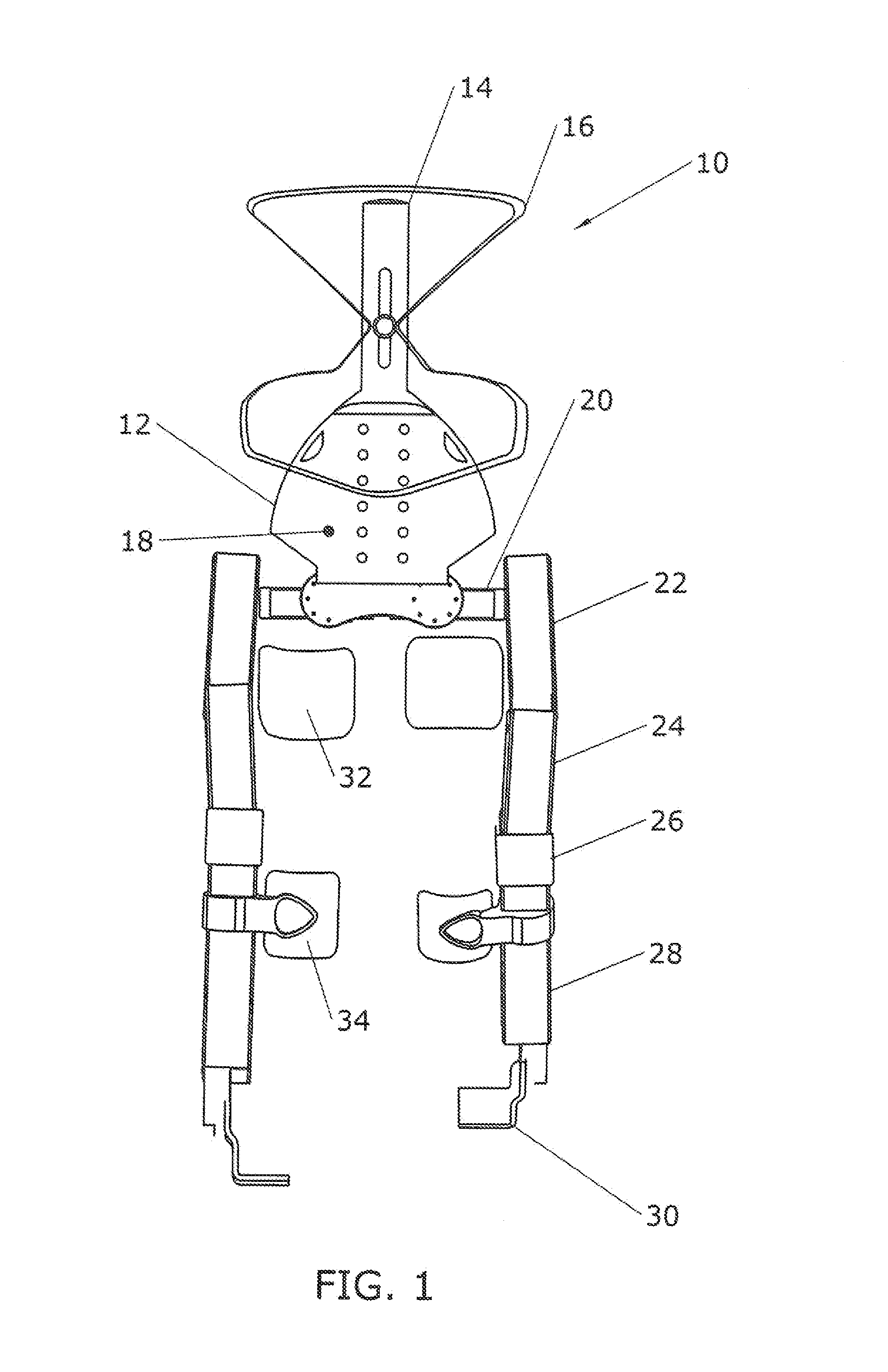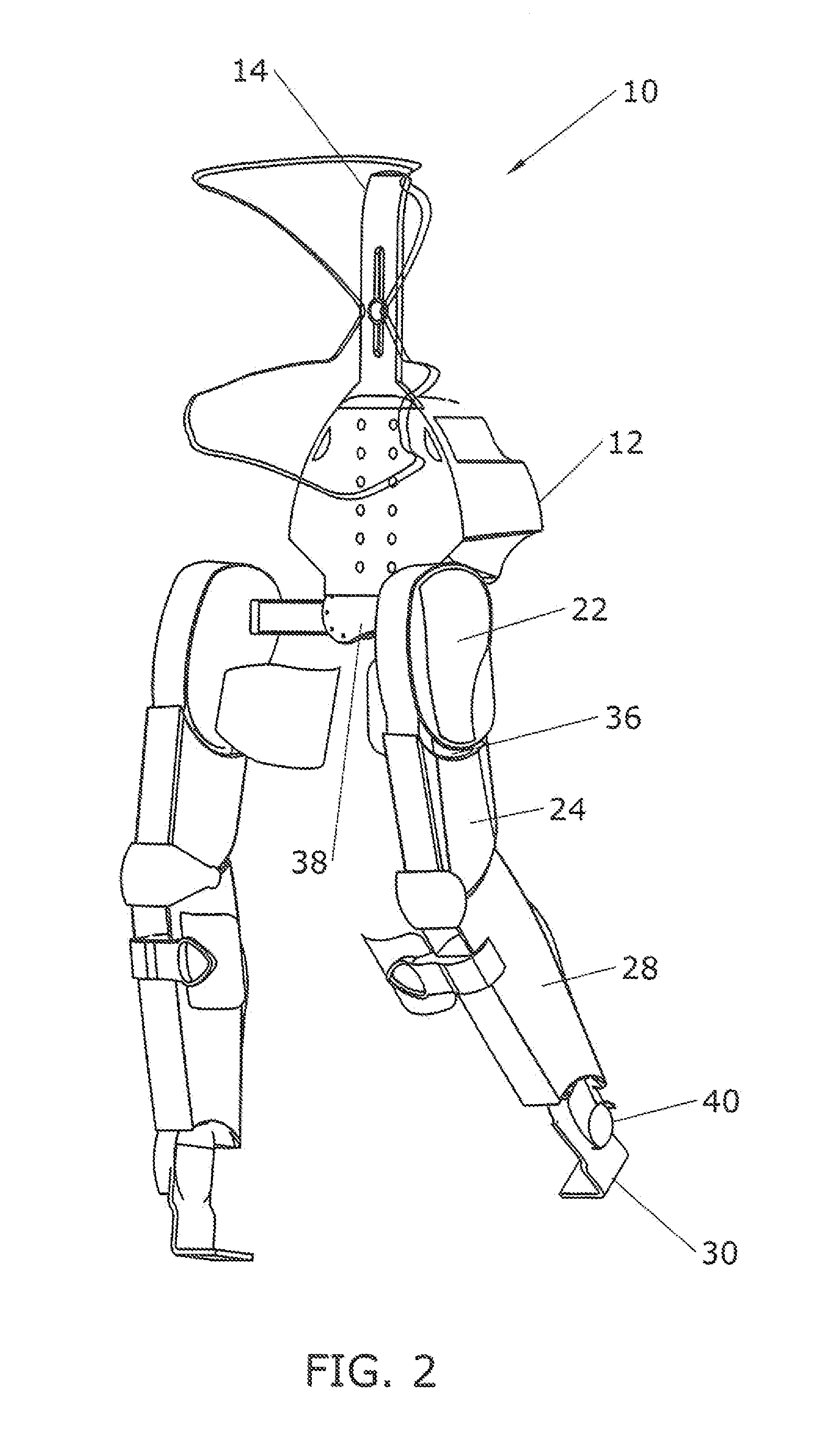Bipedal Exoskeleton and Methods of Use
- Summary
- Abstract
- Description
- Claims
- Application Information
AI Technical Summary
Benefits of technology
Problems solved by technology
Method used
Image
Examples
Embodiment Construction
[0025]FIG. 1 shows a front elevation view of exoskeleton 10 made according to the present invention. FIG. 2 shows a right front perspective view of the exoskeleton in the same configuration. The exoskeleton is designed to be worn by a human user. Its two legs operate in parallel with the normal range of motion of the user's legs. The exoskeleton legs lie on the lateral outward side of each leg of the operator.
[0026]The two legs are attached to chassis 38. Housing 12 is also connected to chassis 38. The housing preferably contains one or more central processing units (“CPU”) running software that controls the functions of the exoskeleton. Sensors are provided so that the control can be closed-loop. For instance, sensors may be provided to determine the position of each joint in the exoskeleton and the force applied to the joint. The CPU uses this formation to control the motion of the joints.
[0027]Returning not to FIG. 1, the basic components of a preferred embodiment of the exoskele...
PUM
 Login to View More
Login to View More Abstract
Description
Claims
Application Information
 Login to View More
Login to View More - R&D
- Intellectual Property
- Life Sciences
- Materials
- Tech Scout
- Unparalleled Data Quality
- Higher Quality Content
- 60% Fewer Hallucinations
Browse by: Latest US Patents, China's latest patents, Technical Efficacy Thesaurus, Application Domain, Technology Topic, Popular Technical Reports.
© 2025 PatSnap. All rights reserved.Legal|Privacy policy|Modern Slavery Act Transparency Statement|Sitemap|About US| Contact US: help@patsnap.com



